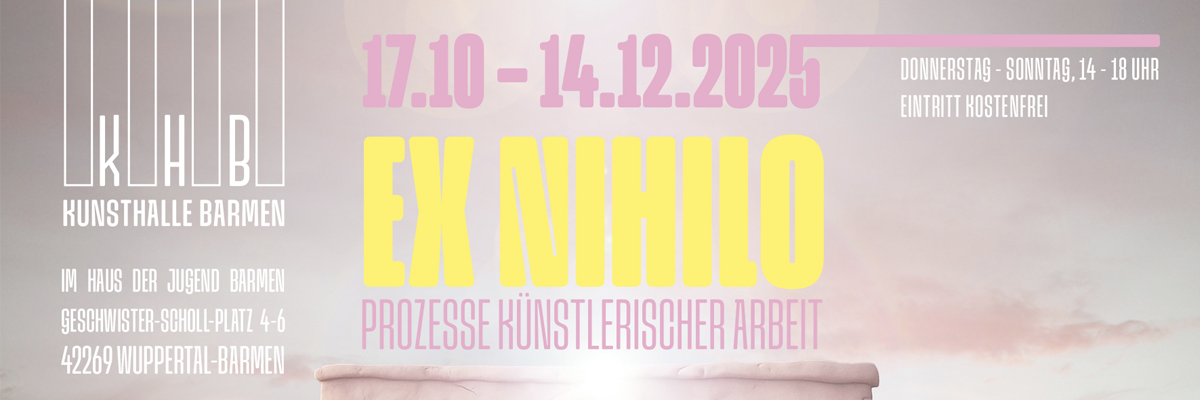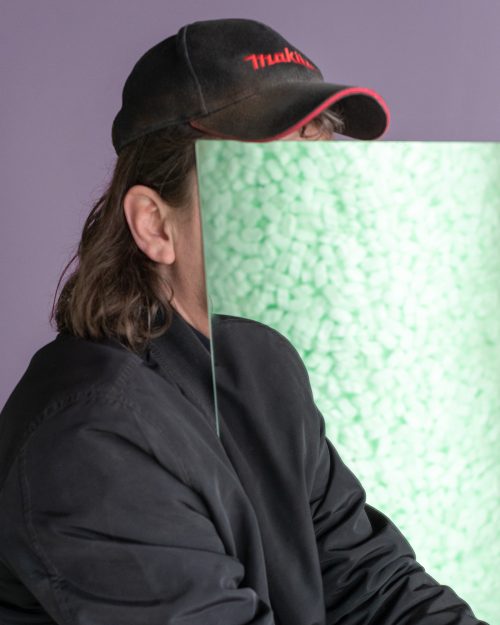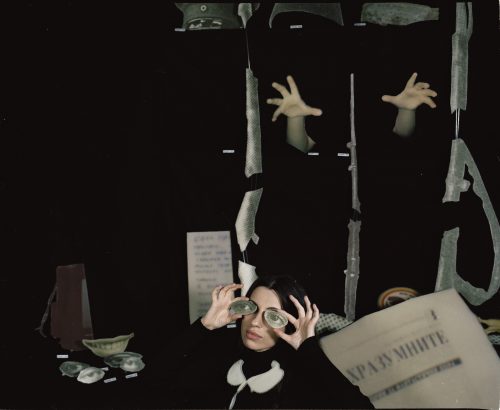
Pauline Boudry / Renate Lorenz
Right Body, Wrong Time

Advertisement

















"Under this mask, another mask. I will never finish lifting all these faces."
Claude Cahun and Marcel Moore (1929–1930)
Just as the pioneering photomontage work by Claude Cahun and her partner Marcel Moore disrupted gender representations, the films of Pauline Boudry / Renate Lorenz feature protagonists with multiple faces that destabilize the notion of the original. Who are we watching? (which, by ricochet, prompts us to ask: who are we?) In previous exhibitions, for instance, one might observe Werner Hirsch, a persona of Antonia Baehr, reenacting a BBC interview with Jean Genet while sporting a blonde beehive wig (Toxic, 2012), or dressed in leather with rhinestone earrings, delivering a text inspired by The Weather Underground, a radical leftist group active in the U.S. during the 1970s (Opaque, 2014). More recently, Hirsch appeared dressed in a suit made of lightbulbs (A Portrait, 2024–). The gallery, like the backstage of a show taking place offscreen, becomes the space where the "drag assemblages" that make up these characters are brought to life by the artists.
Over the years, the Wig Pieces and Chain Pieces developed by Pauline and Renate have become signature accessories for these elusive protagonists. Borrowed from the worlds of celebration, drag, and constraint, these objects form an improbable family that evokes contradictory impressions in each viewer. The polished, shiny texture of the chains, the density and softness of the hair, their eroticism — all contrast with the unease triggered by the mental image of an absent body being bound by these chains or stripped of that hair. Like the film protagonists themselves, they are intended to create unexpected encounters, rooted in what might be called a 'queer surrealism' steeped in minoritarian cultures.
It is thus perfectly natural that in the midst of this forest of accessories, we find Chelsea Manning standing in for the DJ in an empty Berlin club. All The Things She Said (2025) is a two-part video installation created with the US whistleblower and activist, in which she expresses her love for club music as a survival strategy. As in the installation Moving Backwards (2019), which paid tribute to the women fighters of Rojava, the artists draw on political resistance to offer a vision of hope in particularly desperate times.
— IA
“In the places I love, something grows, drives me, and helps me grow.”
— Joëlle Zask, Se tenir quelque part sur la Terre [Standing Somewhere on Earth], Premier Parallèle, 2023
A few years ago, while I was teaching at an art school and adding the gallery as part of an intimate geography, I came across the following sentence by independent curator Alhena Katsof in a book on the work of Pauline Boudry / Renate Lorenz: "like smoke across the frame". I joyfully shared these words with my students, as a fleeting point of connection between us and as the site of an experience that endlessly exceeded us. If Marcelle Alix is a frame animated by passion, it is also an experience that gives rise to other experiences, and in that sense, it defies the limitations of institutional frameworks that I’ve tried to traverse in the least rigid way possible. The gallery, like all the spaces chosen by Pauline Boudry / Renate Lorenz, is a site of passion, constraint, violence, struggle, and freedom.
Earlier, they filmed a public square in Berlin where a refugee camp had been set up between 2012 and 2014 in protest against German asylum policy (Silent, 2016); then came the deserted runway of the former Tempelhof Airport (The Right to Have Rights, 2019). Before that, the "right to opacity" (Édouard Glissant) resonated in the ruins of a former public swimming pool, also in Berlin (Opaque, 2014). And now, Schwuz — Germany’s oldest club for queer and trans people — becomes a site of encounter and enchantment. Pauline Boudry / Renate Lorenz make more visible the relationship each person has to a space where it is possible to hide, to anticipate the unpredictability of bodies, and to experiment with forms of solidarity.
It is in this space of politicization and social bonding that they film anti-war activist Chelsea Manning DJing a set, using sound as a guerrilla tactic or an art of survival. All these frames and framings bring me back to 15th-century painting. I recall The Annunciation by Fra Angelico at the San Marco convent and think of the encounter that the artist blurs — between painting and real space, between symbolic function and our own gaze that perceives hybridization and sees what it wants to see. The edge of the fresco is camouflaged by Fra Angelico by mimicking the qualities of the site (the gray of the frame merges with the gray of the stone). His painting seeks us out through contact, positioning our bodies and imaginations before larger ramifications.
The unspeakable rather than words, sensations as significant as defined language, desires for both identification and disidentification, and an almost carnivalesque angel who might announce new kinds of relationships. I see, in Pauline and Renate’s film installation, the ideal of an osmosis within a democratic space, where the energy drawn produces a form of social and spatial equality through the sharing of collective experience. They film at length the gestures carried by Chelsea Manning’s body, a body capable of moving us through movements whose power is not always immediately measurable. Chelsea Manning infects us with her “amber optimism”: a material that is neither truly transparent nor truly opaque — like a body able to control its own degrees of visibility.
— CB
Pauline Boudry and Renate Lorenz have been working together in Berlin since 2007. Recent solo shows include: "You Ask Me To Not Give Up Up Up", Abbatiale Bellelay (2025); "A Portrait", Leeum Museum of Art, Seoul (2024); "Portrait of a Movement", Tensta Konsthal (2023) and CA2M, Madrid (2022), "(No) Time", FRAC Bretagne (2021); "Moving Backwards", The Swiss Pavillon of the 58th Venice Biennale; "Ongoing Experiments with Strangeness", Julia Stoschek Collection, Berlin (2019); "Improvisation télépathique", Centre Culturel Suisse, Paris (2018). Their work has also been included in many group exhibitions at The Philadephia Museum of Art, MCBA Lausanne, The Whitechapel Gallery, London, Muzeum Sztucki, Lodz, Centre Pompidou, Paris, Van Abbemuseum, EIndhoven, Sao Paulo Biennale, The Schinkel Pavillon, Berlin, The Hammer Museum, Los Angeles, Nouveau Musée National de Monaco, The New Museum, New York, Centre d'art contemporain de Genève, FRAC Lorraine and Castello di Rivoli, Torino among others.
The gallery show coincides with the artists’ first solos in Mexico (“All the Things She Said”, MUAC-Museo Universitario Arte Contemporaneo, Mexico City) and Italy (“How We Always Survived”, Istituto Svizzero, Rome) and their participation to Biennale Son [Sound Biennial] in Sion, Switzerland.



